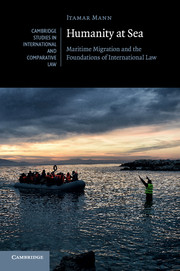Book contents
- Frontmatter
- Dedication
- Epigraph
- Contents
- List of Figures
- Acknowledgments
- Introduction: Humanity Washed Ashore
- 1 Flagless Vessel
- 2 What Is a Human Rights Claim?
- 3 What Is a Human Rights Commitment?
- 4 Between Moral Blackmail and Moral Risk
- 5 The Place Where We Stand
- 6 Imagination and the Human Rights Encounter
- Conclusion: The Dual Foundation of International Law
- Postscript
- Index
- CAMBRIDGE STUDIES IN INTERNATIONAL AND COMPARATIVE LAW
3 - What Is a Human Rights Commitment?
Published online by Cambridge University Press: 05 September 2016
- Frontmatter
- Dedication
- Epigraph
- Contents
- List of Figures
- Acknowledgments
- Introduction: Humanity Washed Ashore
- 1 Flagless Vessel
- 2 What Is a Human Rights Claim?
- 3 What Is a Human Rights Commitment?
- 4 Between Moral Blackmail and Moral Risk
- 5 The Place Where We Stand
- 6 Imagination and the Human Rights Encounter
- Conclusion: The Dual Foundation of International Law
- Postscript
- Index
- CAMBRIDGE STUDIES IN INTERNATIONAL AND COMPARATIVE LAW
Summary
In May 1941, Hannah Arendt arrived in New York. She was thirty-two years old, broke, and knew little English. But it wasn't long before she started to publish her essays and reviews in the new language. Among these early works was “We Refugees” (1943), a short and personal piece she penned for the Jewish-American The Menorah Journal. Her experiences of persecution are reflected in this essay. Yet Arendt was now in the safety of a new society. Though still stateless – Arendt became a naturalized citizen of the United States in 1950 – she began to enjoy her membership in the American social contract. In some of her later work, Arendt celebrated the constitutional tradition of the society she now became part of. Comparing the American to the French revolution, she painted a magnificent portrait of the American Founding Fathers, who appeared as the architects of the paramount democracy in modern times.
In 1941, it may have looked to Arendt like a commitment to realize the rights of noncitizens could be incorporated as part of the American social contract. This proposition was fundamentally and dramatically put to a test at the US Supreme Court fifty years later, as the Cold War came to an end. Noncitizens at American borders were no longer Europeans or allies from a faraway war. Like the growing number of unauthorized migrants landing at the borders of Europe around the same time, they came from the developing world and were propelled by a mixture of persecution and economic dearth. US policymakers believed the country had no interest in admitting them.
Facing Haitian refugees, the US Supreme Court did not find that noncitizens could enforce their rights by appeal to the American social contract. The Court did not even uphold the minimal idea of human rights as protection of survival, explained in the previous chapter. Instead, the Court allowed the executive branch to close the country's doors. Under a bilateral agreement with Haiti, migrants were interdicted on the high seas and sent back to the risk of persecution. Sale v. Haitian Centers Council (1993) was the famous (or rather infamous) case that upheld this arrangement.
- Type
- Chapter
- Information
- Humanity at SeaMaritime Migration and the Foundations of International Law, pp. 102 - 133Publisher: Cambridge University PressPrint publication year: 2016

